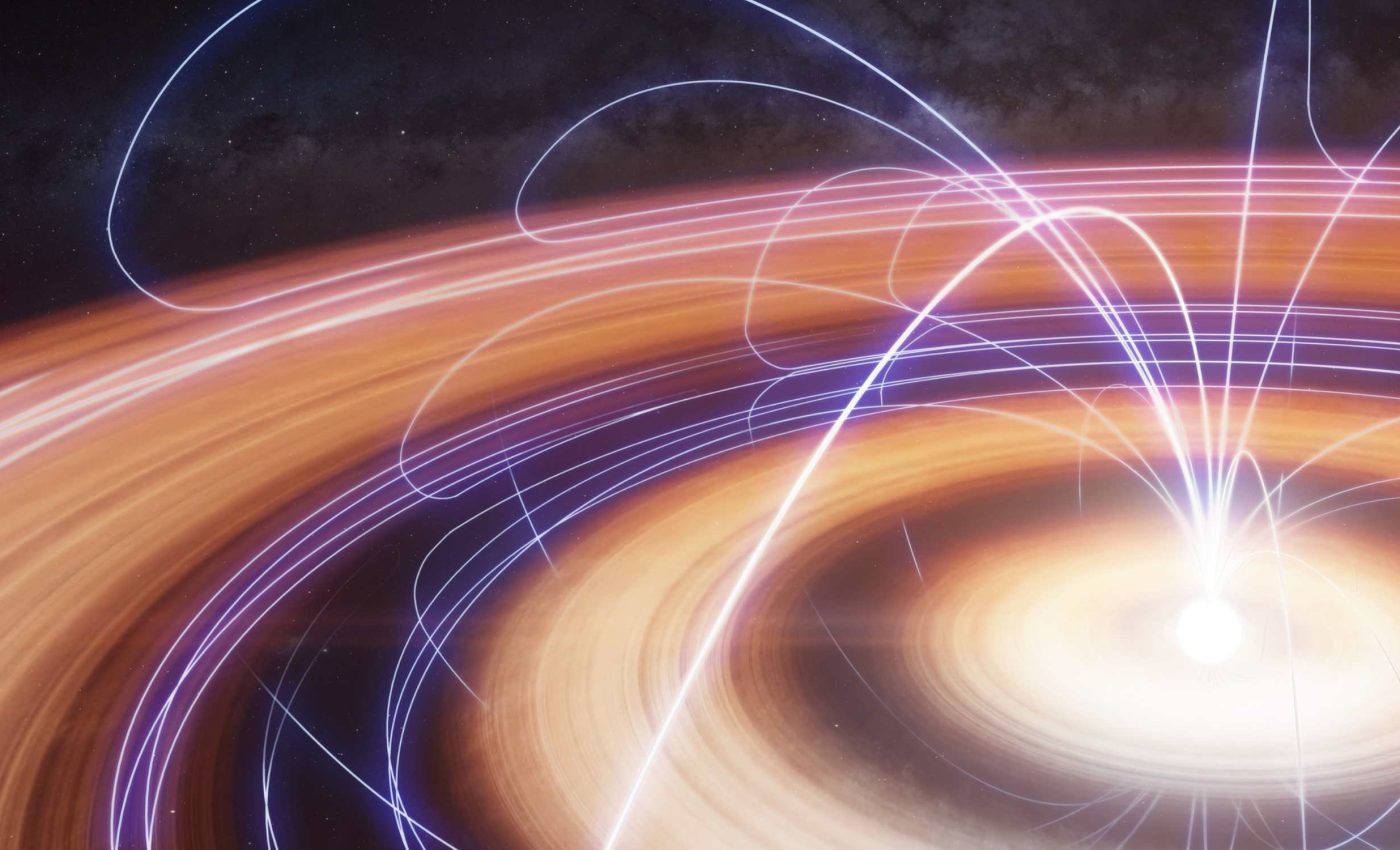
Astronomers observe how magnetic fields shape new planets for the first time
Astronomers have, for the first time, mapped magnetic fields inside a planet-forming disk and seen how those invisible forces shape the gas and dust into distinct patterns.
The new study reveals a magnetic field about 10 milligauss in strength, gently guiding material around the young star TW Hydrae.
The observations came from the Atacama Large Millimeter/submillimeter Array (ALMA) in Chile, a network of high-precision radio antennas that captures faint signals from space.
Using a radio technique that reads molecular fingerprints, the team detected a field roughly a thousand times weaker than a fridge magnet, yet strong enough to organize matter across a star-system-sized region.
Mapping magnetic fields
Richard Teague of the Massachusetts Institute of Technology (MIT) led the project and traced the field across a broad ring in the disk. The map shows the field changing orientation where the dust and gas show strong structure.
“This is the best look we’ve ever had at the invisible hand shaping the birthplaces of new worlds,” said Teague.
His team’s results offer the clearest evidence yet that magnetic fields actively sculpt the environments where planets take shape.
Magnetic fields in disks matter
Magnetic fields can haul gas inward, shed angular momentum outward, and launch outflows that help disks thin and clear. A comprehensive review concludes that magnetic forces also left fingerprints in early solar system rocks.
Those same processes influence where dust piles up enough to form planet cores. They also help set the clock for when gas giants can grow before the disk disperses.
A field of ten milligauss may seem tiny by laboratory standards, but in the vast, delicate environment of a young disk, it’s powerful enough to steer streams of gas across billions of miles.
Magnetism shapes flow patterns that feed developing planets and carve lanes in the material. It adds structure that gravity alone would not arrange so cleanly.
How the team measured the invisible
The group read tiny shifts in emission from CN, a gas tracer in disks, across several related spectral lines. Those shifts change in precise ways when magnetic fields are present.
They exploited the Zeeman effect, the splitting of spectral lines by magnetic fields, to separate magnetic broadening from other sources of line width. This approach does not rely on detecting polarized light.
Dust polarization can mislead because scattering and grain alignment can imitate magnetic patterns, especially in bright disks. A recent paper points out that separating these effects demands stringent data and careful modeling.
Circular polarization searches for magnetic fields in disks also push current instruments to their limits. A technical preprint explains why those measurements are sensitivity hungry and often return non-detections.
Clues in the gaps
The magnetic field changes near a well known gap at about 82 astronomical units from the star. An astronomical unit is the distance between Earth and Sun – about 93 million miles or 150 million kilometers.
That radius is roughly 7.6 billion miles (12.2 billion kilometers) from the star and marks a drop in disk density. An independent analysis identified a millimeter continuum gap at essentially the same location.
Inside that gap the field has a poloidal orientation – it points roughly up or down. That geometry matches a regime where gas can stream along vertical field lines.
Outside the gap the field lies mostly within the disk plane. A toroidal field, a magnetic field that circles within the disk plane, could contribute, although the data could not separate toroidal from radial components.
What the numbers really mean
The detection spans tens of billions of miles across the disk and reaches into regions where icy bodies may form. It reveals how weak fields can still orchestrate large scale flows.
This measurement also ties to the chemistry we see in planet-forming zones. Certain molecules thrive where the field directs gas into denser arcs and rings.
The method works at low radio frequencies where ALMA excels in sensitivity and stability. That helps observers schedule longer tracks and compare many lines in the same setup.
Because it uses unpolarized light, the approach avoids confusion from scattering that plagues polarization maps in some disks. It also enables astronomers to read the field where dust emission is faint.
Young planets and magnetic fields
ALMA’s upcoming wideband sensitivity upgrade will boost the speed and depth of these measurements across many disks. The upgrade increases the instantaneous bandwidth while keeping full spectral detail, which is vital for tracking small line-width changes.
With wider bandwidth, teams can capture more molecular lines in fewer observations. That makes it practical to build magnetic maps for disks at different ages and masses.
Comparing those maps will test ideas about when and where different planets grow. It will also show how fields intersect with pressure bumps, vortices, and newborn moons.
The new map of TW Hydrae marks a turning point, linking magnetic structure directly to how planets take shape. It transforms magnetism from a long-suspected influence into a clearly measured force in planet formation.
The study is published in The Astrophysical Journal Letters.
—–
Like what you read? Subscribe to our newsletter for engaging articles, exclusive content, and the latest updates.
Check us out on EarthSnap, a free app brought to you by Eric Ralls and Earth.com.
—–













